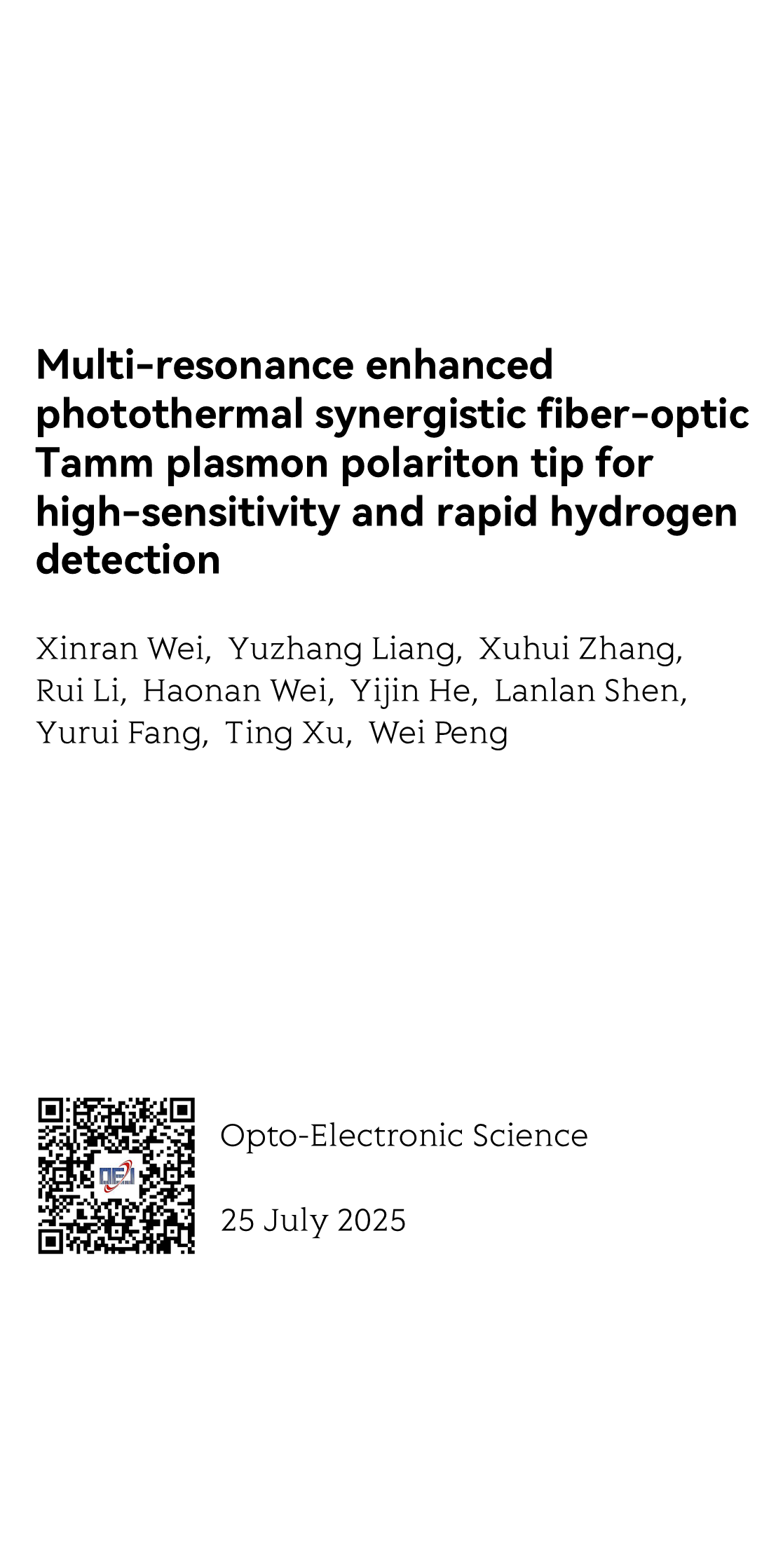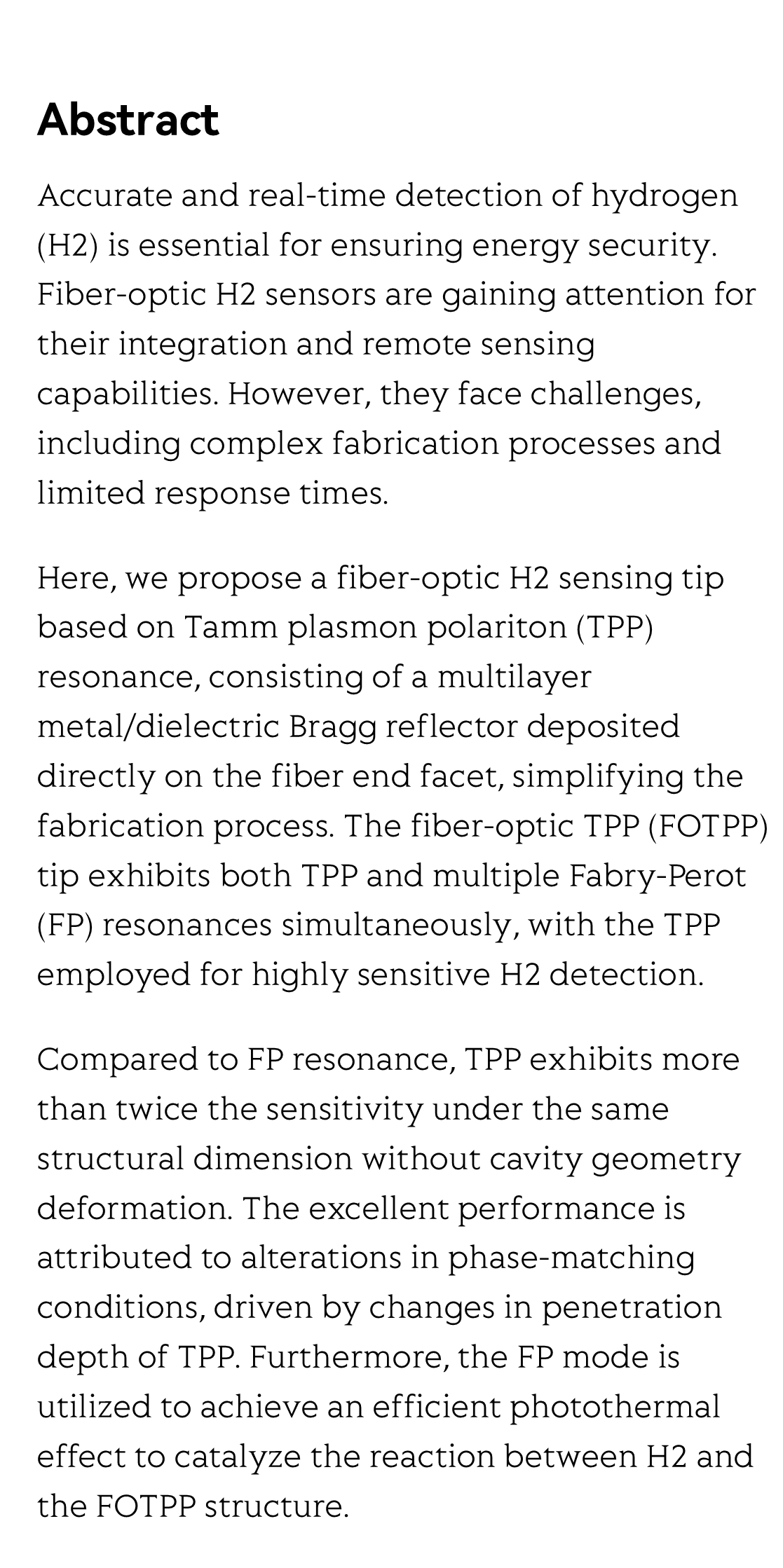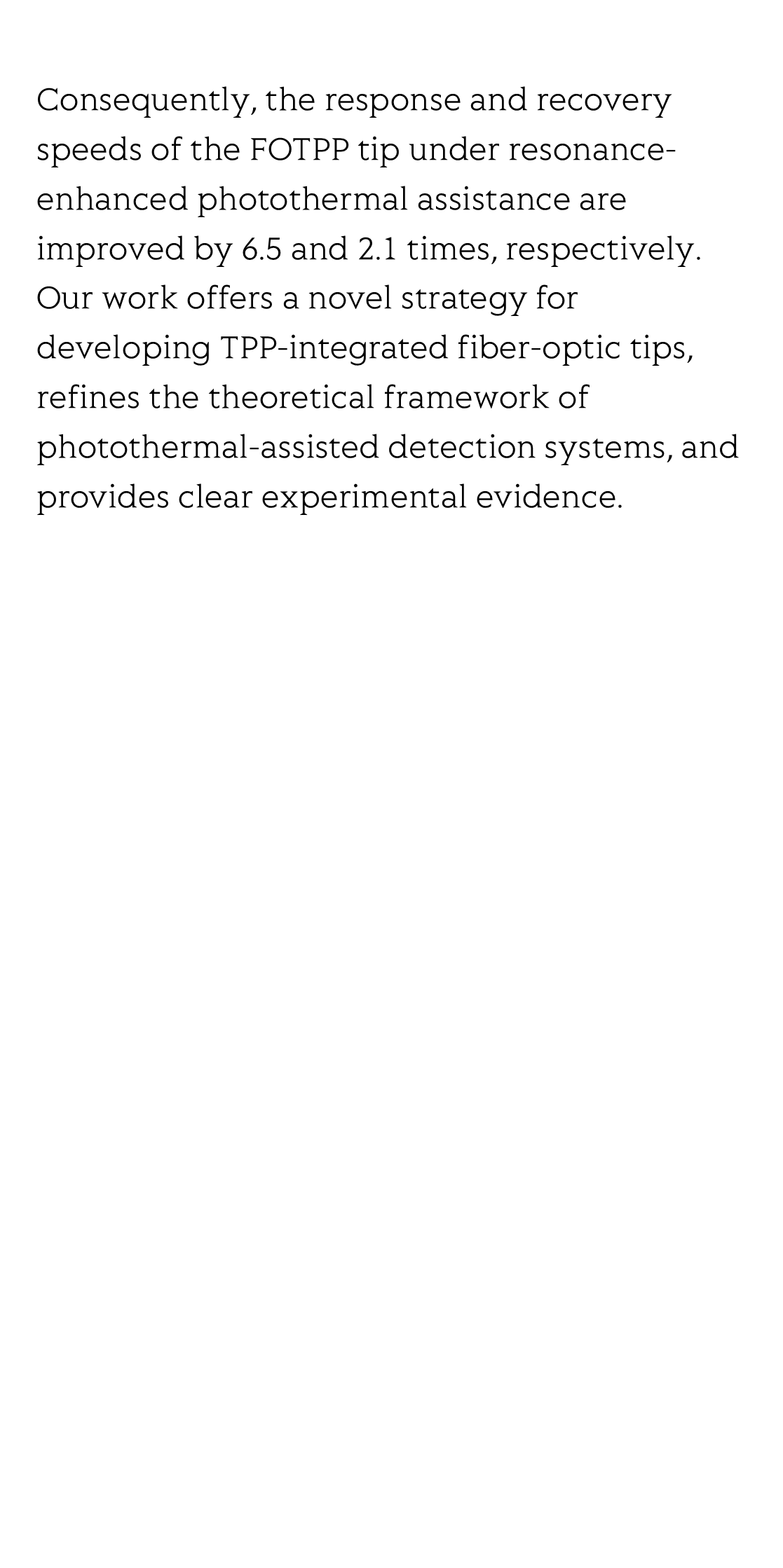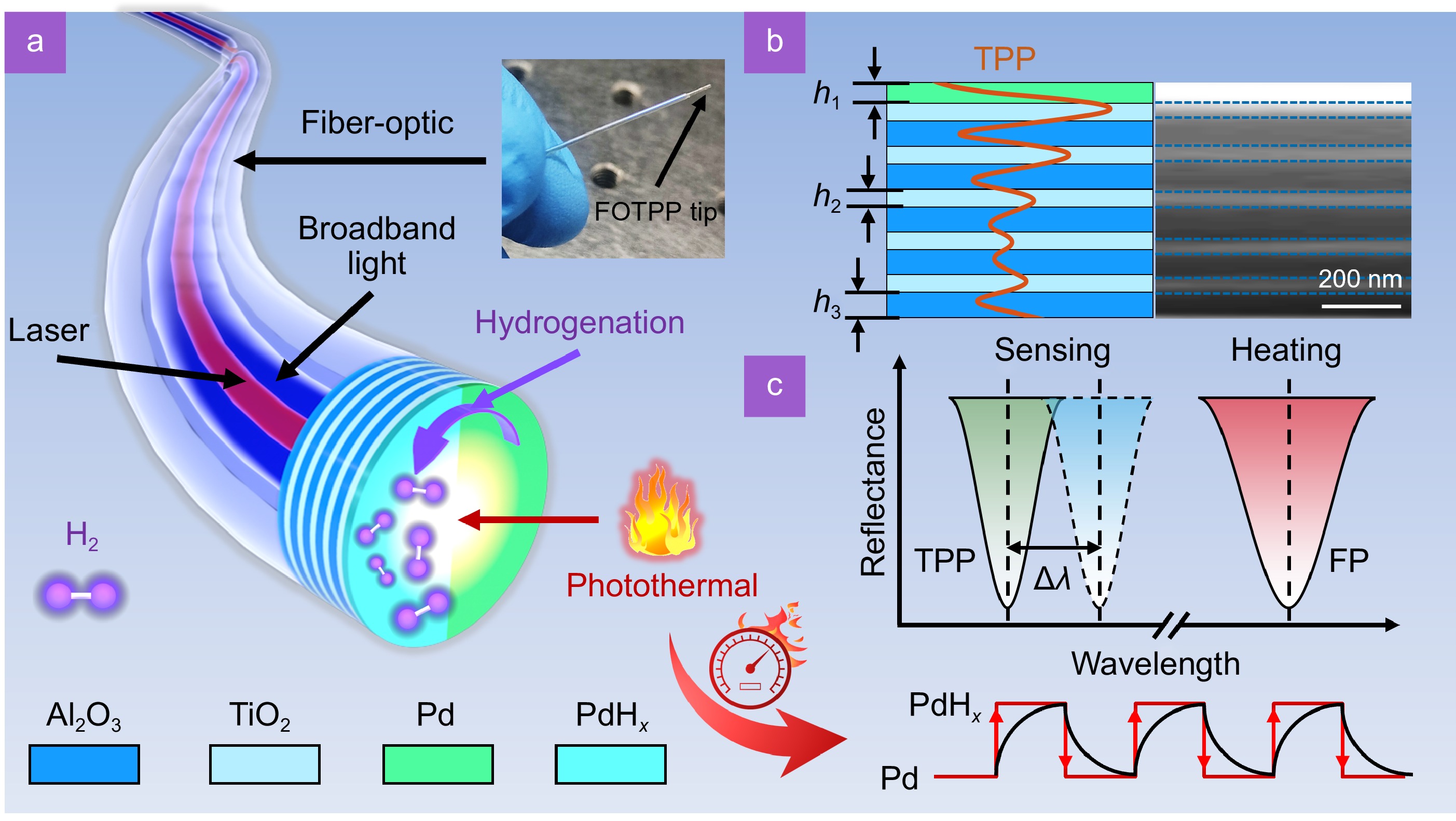(Peer-Reviewed) Multi-resonance enhanced photothermal synergistic fiber-optic Tamm plasmon polariton tip for high-sensitivity and rapid hydrogen detection
Xinran Wei 魏欣然 ¹, Yuzhang Liang 梁瑜章 ¹, Xuhui Zhang 张旭辉 ² ³, Rui Li 李睿 ¹, Haonan Wei 魏浩男 ¹, Yijin He 何怡瑾 ¹, Lanlan Shen 申岚岚 ¹, Yurui Fang 方蔚瑞 ¹, Ting Xu 徐挺 ⁴ ⁵, Wei Peng 彭伟 ¹
¹ School of Physics, Dalian University of Technology, Dalian 116024, China
中国 大连 大连理工大学物理学院
² Liaoning Key Laboratory of Marine Sensing and Intelligent Detection, Dalian Maritime University, Dalian 116026, China
中国 大连 大连海事大学 辽宁省海洋传感与智能检测技术重点实验室
³ Information Science and Technology College, Dalian Maritime University, Dalian 116026, China
中国 大连 大连海事大学 信息科学技术学院
⁴ National Laboratory of Solid-State Microstructures, College of Engineering and Applied Sciences and Collaborative Innovation Center of Advanced Microstructures, Nanjing University, Nanjing 210093, China
中国 南京 南京大学现代工程与应用科学学院 固体微结构物理国家重点实验室 人工微结构科学与技术协同创新中心
⁵ Key Laboratory of Intelligent Optical Sensing and Manipulation, Ministry of Education, Nanjing University, Nanjing 210093, China
中国 南京 南京大学智能光传感与调控技术教育部重点实验室
Opto-Electronic Science, 2025-07-25
Abstract
Accurate and real-time detection of hydrogen (H2) is essential for ensuring energy security. Fiber-optic H2 sensors are gaining attention for their integration and remote sensing capabilities. However, they face challenges, including complex fabrication processes and limited response times.
Here, we propose a fiber-optic H2 sensing tip based on Tamm plasmon polariton (TPP) resonance, consisting of a multilayer metal/dielectric Bragg reflector deposited directly on the fiber end facet, simplifying the fabrication process. The fiber-optic TPP (FOTPP) tip exhibits both TPP and multiple Fabry-Perot (FP) resonances simultaneously, with the TPP employed for highly sensitive H2 detection.
Compared to FP resonance, TPP exhibits more than twice the sensitivity under the same structural dimension without cavity geometry deformation. The excellent performance is attributed to alterations in phase-matching conditions, driven by changes in penetration depth of TPP. Furthermore, the FP mode is utilized to achieve an efficient photothermal effect to catalyze the reaction between H2 and the FOTPP structure.
Consequently, the response and recovery speeds of the FOTPP tip under resonance-enhanced photothermal assistance are improved by 6.5 and 2.1 times, respectively. Our work offers a novel strategy for developing TPP-integrated fiber-optic tips, refines the theoretical framework of photothermal-assisted detection systems, and provides clear experimental evidence.
Flicker minimization in power-saving displays enabled by measurement of difference in flexoelectric coefficients and displacement-current in positive dielectric anisotropy liquid crystals
Junho Jung, HaYoung Jung, GyuRi Choi, HanByeol Park, Sun-Mi Park, Ki-Sun Kwon, Heui-Seok Jin, Dong-Jin Lee, Hoon Jeong, JeongKi Park, Byeong Koo Kim, Seung Hee Lee, MinSu Kim
Opto-Electronic Advances
2025-09-25
Dual-frequency angular-multiplexed fringe projection profilometry with deep learning: breaking hardware limits for ultra-high-speed 3D imaging
Wenwu Chen, Yifan Liu, Shijie Feng, Wei Yin, Jiaming Qian, Yixuan Li, Hang Zhang, Maciej Trusiak, Malgorzata Kujawinska, Qian Chen, Chao Zuo
Opto-Electronic Advances
2025-09-25







